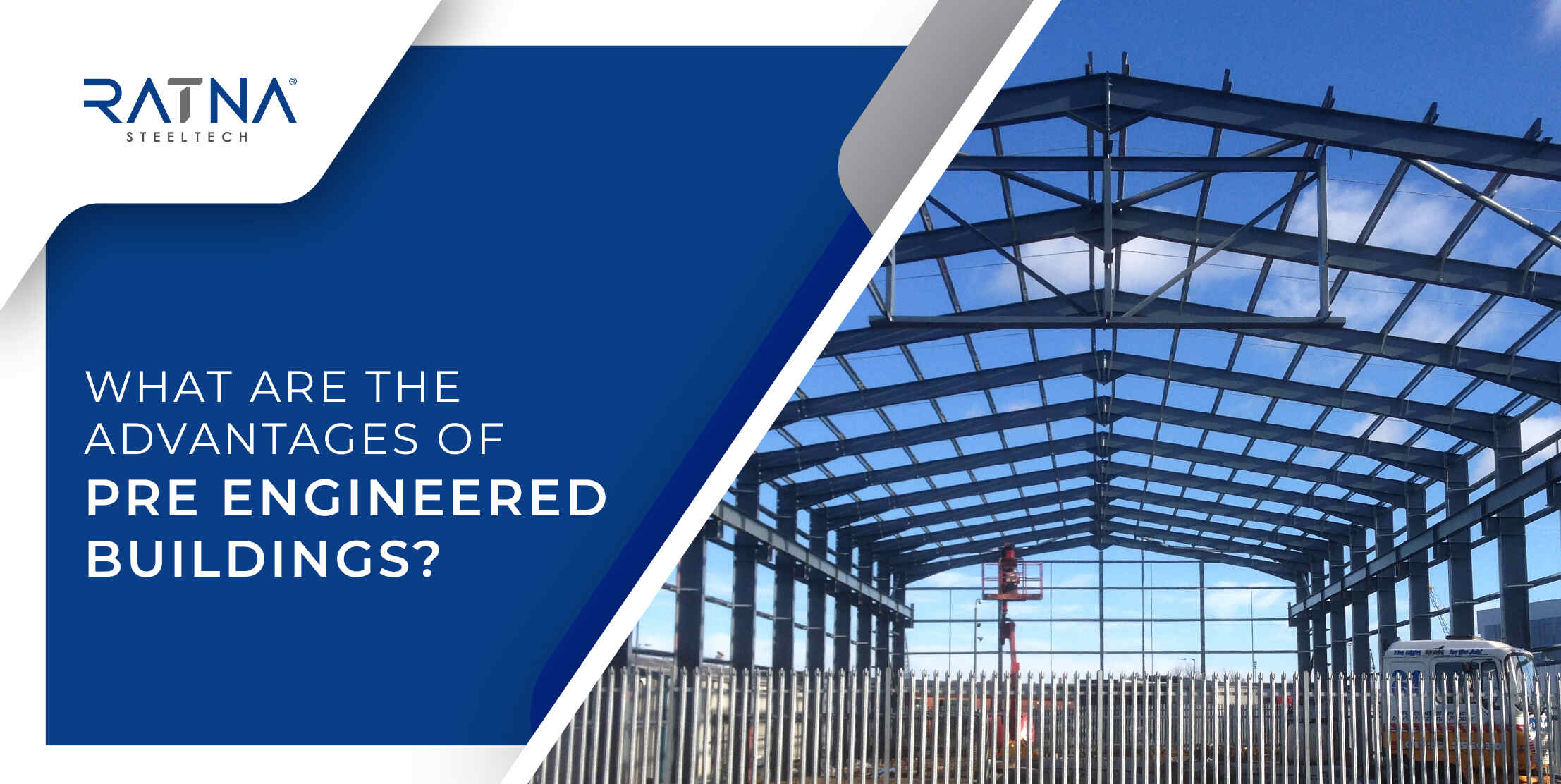Adoption of novel technology and processes is critical in modern buildings for improving efficiency, cost-effectiveness, and sustainability. Pre Engineered Buildings (PEBs) have evolved as a game-changing innovation that has transformed the construction industry. This article will go into the numerous benefits of PEBs, explaining why they have become the preferred choice for architects, engineers, and project managers. Explore What are the Advantages of Pre-engineered Buildings With Ratna Steeltech
Advantages of Pre-Engineered Buildings
1. Speed of Construction:
One of the standout advantages of PEBs is the rapid pace at which they can be erected. The components of a pre-engineered building are manufactured off-site in a controlled environment. Once on-site, the assembly process is streamlined, significantly reducing construction timelines compared to traditional building methods. This speed not only ensures timely project completion but also minimizes labour costs.
2. Cost-Effectiveness:
PEBs offer substantial cost savings, primarily due to the efficient use of materials and the reduction in labour hours. The manufacturing of building components in a controlled environment minimizes waste and optimizes material usage. Additionally, the quick assembly process translates to lower labour costs, making PEBs an economically viable option for various construction projects.
3. Design Flexibility:
Contrary to misconceptions, PEBs do not compromise on design flexibility. In fact, these structures can be customized to meet the unique requirements of different projects. Advanced computer-aided design (CAD) software allows architects and engineers to create intricate designs while ensuring structural integrity. PEBs are versatile and can be adapted for various applications, including warehouses, industrial facilities, and commercial buildings.
4. Structural Integrity:
Precision engineering and advanced technology contribute to the exceptional structural integrity of PEBs. These buildings are designed to withstand environmental forces, including seismic activities and heavy wind loads. The use of high-quality materials and rigorous quality control during manufacturing ensures that PEBs meet and often exceed industry standards for structural stability.
5. Energy Efficiency:
PEBs are designed with energy efficiency in mind. The insulation systems used in these buildings help regulate indoor temperatures, reducing the reliance on heating, ventilation, and air conditioning (HVAC) systems. This not only contributes to environmental sustainability but also results in long-term operational cost savings for the building owner.
6. Environmental Sustainability:
The controlled manufacturing environment of PEB components allows for efficient use of resources and minimizes waste. Additionally, many PEB manufacturers prioritize the use of sustainable materials, contributing to a reduced environmental footprint. The durability and recyclability of the materials used in PEBs further enhance their eco-friendly profile.
7. Applications of Pre-Engineered Buildings:
PEBs find extensive applications across diverse industries. They are commonly used for manufacturing facilities, warehouses, logistics centres, and commercial buildings. The adaptability of PEBs makes them suitable for both small-scale projects and large-scale industrial complexes. The inherent advantages of PEBs, such as cost-effectiveness and speed of construction, make them an ideal choice for projects where time and budget constraints are crucial considerations.
8. Quality Control:
The off-site manufacturing process of PEB components allows for stringent quality control measures. PEB manufacturers and suppliers adhere to industry standards and certifications, ensuring that each component meets the specified criteria. This commitment to quality results in buildings that not only meet but often exceed structural and safety standards.
Conclusion:
To summaries, the Advantages of Pre-engineered Buildings are compelling, and they have positioned themselves as a game changer in the construction business. PEBs provide a comprehensive answer for a variety of construction objectives, from rapid construction and cost-effectiveness to design flexibility and environmental sustainability. The ubiquity and relevance of Pre Engineered Buildings are predicted to expand as the demand for efficient and sustainable building solutions grows, making them a cornerstone of current construction practice’s.

One thought on “What are the Advantages of Pre-engineered Buildings?”